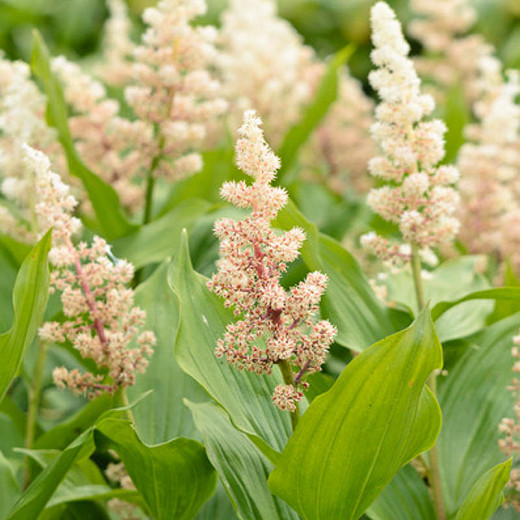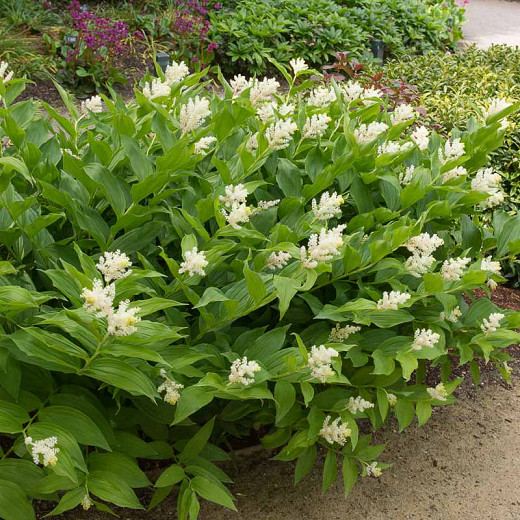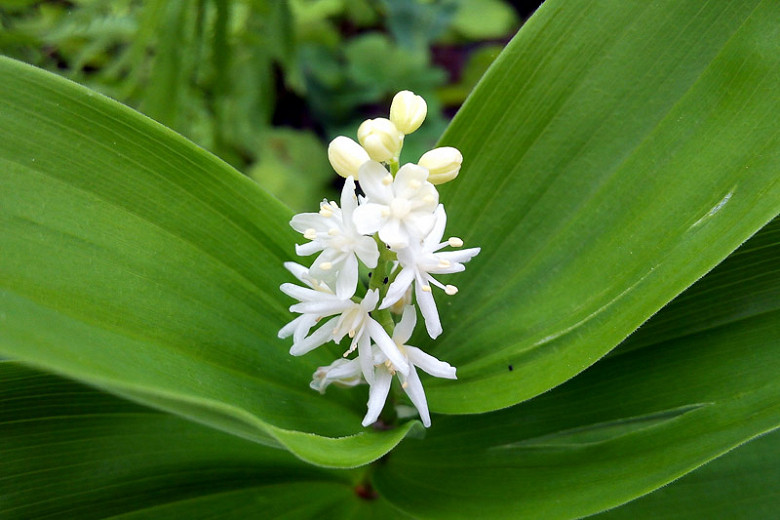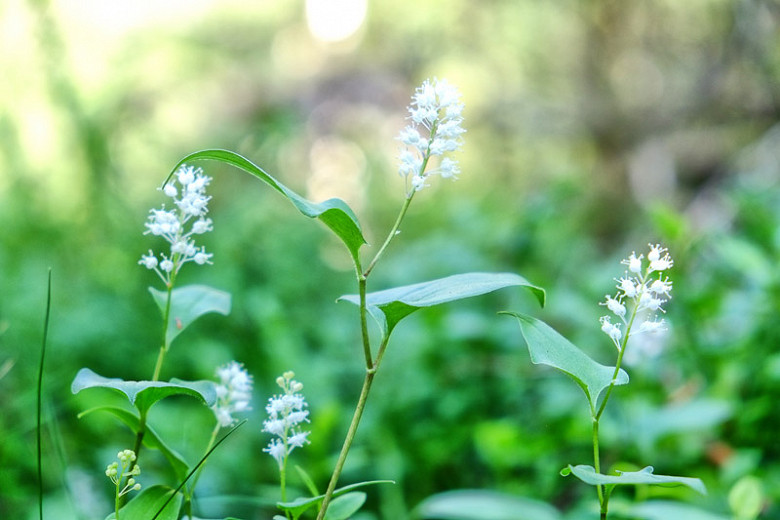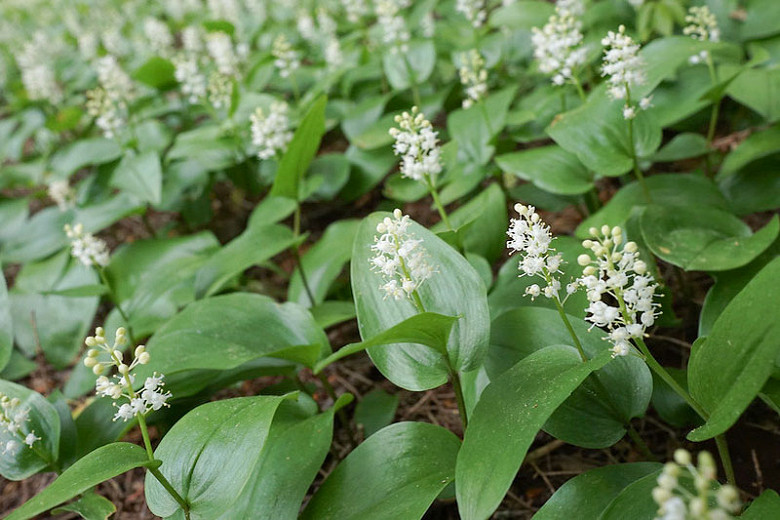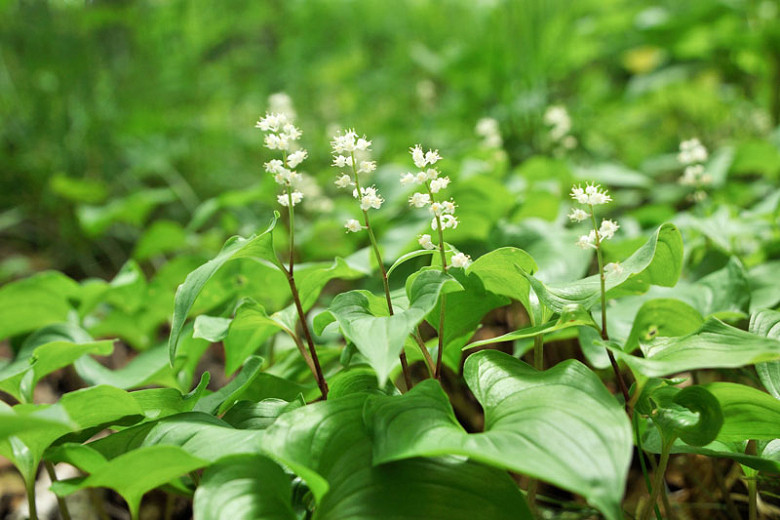Maianthemum racemosum (False Spikenard)
Maianthemum racemosum (False Spikenard) is a great-looking perennial in the garden with its graceful, slightly arching stems featuring narrow, ovate, pointed, mid-green leaves with strong parallel veins running up to the tip. Rich with a rose fragrance, plume-like clusters of small, white flowers appear in mid to late spring.
Maianthemum racemosum (False Spikenard) is a great-looking perennial in the garden with its graceful, slightly arching stems featuring narrow, ovate, pointed, mid-green leaves with strong parallel veins running up to the tip. Rich with a rose fragrance, plume-like clusters of small, white flowers appear in mid to late spring. They give way to showy, ruby red berries in late summer, often persisting into fall unless earlier consumed by wildlife. The foliage of this North American native turns a lovely yellow in fall. It resembles that of the true Solomon's seals (Polygonatum spp.), but the latter has pendulous, axillary, bell-like flowers.
- Recipient of the prestigious Award of Garden Merit of the Royal Horticultural Society
- This clump-forming perennial grows up to 1-3 ft. high (30-90 cm) and slowly spreads by thick rhizomes, often forming large colonies in the wild.
- Performs best in part shade, in average, medium moisture, well-drained soils. Rich, moist, humusy soils are preferred. Intolerant of heat and humidity.
- Easy to grow, False Spikenard is a welcomed addition to shady borders, cottage gardens, woodland gardens, naturalized areas or in moist areas near streams or ponds. Most effective when planted in groups of six or more.
- No serious pest or disease issues.
- Propagate by seed in pots in a cold frame in autumn. Propagate by division of rhizomes in spring.
- Native to North America.
Requirements
| Hardiness | 3 – 8 |
|---|---|
| Heat Zones | 1 – 9 |
| Climate Zones | 1, 2, 3, 4, 5, 6, 7, 14, 15, 16, 17 |
| Plant Type | Perennials |
| Plant Family | Maianthemum – False Lily of the Valley |
| Exposure | Partial Sun |
| Season of Interest | Spring (Mid,Late) |
| Height | 1' – 3' (30cm – 90cm) |
| Spread | 1' – 2' (30cm – 60cm) |
| Spacing | 18″ – 24″ (45cm – 60cm) |
| Water Needs | Average |
| Maintenance | Low |
| Soil Type | Clay, Loam, Sand |
| Soil pH | Acid, Neutral |
| Soil Drainage | Moist but Well-Drained, Well-Drained |
| Characteristics | Fragrant, Plant of Merit, Showy, Fruit & Berries |
| Native Plants | United States, Alaska, California, Midwest, Illinois, Indiana, Iowa, Kansas, Michigan, Minnesota, Missouri, Nebraska, North Dakota, Ohio, South Dakota, Wisconsin, Northeast, Connecticut, Delaware, Maine, Massachusetts, Maryland, New Hampshire, New Jersey, New York, Pennsylvania, Rhode Island, Vermont, Pacific Northwest, Idaho, Oregon, Washington, Rocky Mountains, Colorado, Montana, Utah, Wyoming, Southeast, Alabama, Arkansas, Florida, Georgia, Kentucky, Louisiana, Mississippi, North Carolina, South Carolina, Tennessee, Virginia, West Virginia, Southwest, Nevada, Arizona, New Mexico, Oklahoma, Texas |
| Attracts | Birds |
| Garden Uses | Beds and Borders, Ponds and Streams, Underplanting Roses and Shrubs |
| Garden Styles | Informal and Cottage, Prairie and Meadow |
